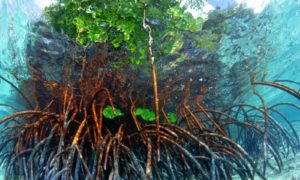Événement Virtuel
Nature-based Solutions and Ecosystems Restoration | Geneva Nature-based Solutions Dialogues | World Environment Day & UN Decade on Restoration
The Geneva Nature-based Solutions dialogues aim to facilitate further engagement and discussion among the stakeholders in International Geneva and beyond, in the lead-up to a critical year for nature and society. The dialogues are convened by the Geneva Environment Network and the International Union for Conservation of Nature (IUCN). This special session on ecosystems restoration is held within the framework of the UN Decade on Restoration and World Environment Day celebrations.


About the Dialogues
We are facing a triple planetary crisis – climate change, nature loss and pollution. In this context, Nature-based Solutions (NbS) are a powerful ally to address a societal and environmental challenges. As per IUCN definition, NbS are actions to protect, sustainably manage and restore natural or modified ecosystems that address societal challenges effectively and adaptively, simultaneously providing human well-being and biodiversity benefits.
NbS are a powerful tool to facilitate and catalyse the engagement of cross-sectoral stakeholders to join forces towards the implementation of an ambitious Post-2020 Global Biodiversity Framework (GBF) and move towards achieving the CBD 2050 Vision of ‘Living in harmony with nature’. NbS also offer a pathway for synergies among several multilateral environmental agreements, including for biological diversity (CBD), climate change (UNFCCC), disaster risk reduction (Sendai Framework), desertification (UNCCD) and the wider Sustainable Development Goals (SDGs) – and for mainstreaming nature conservation into sectoral decision-making processes.
In the lead-up to a critical year for nature and society, NbS offer an opportunity to address a wide range of urgent societal challenges. The year 2021 and the major upcoming negotiations should indeed mark a turning point towards a resilient world for future generations.
Join the Geneva Environment Network and the International Union for Conservation of Nature in a one-year journey, where experts from all over the world and different sectors will discuss throughout the year how NbS are relevant to various debates ongoing in Geneva.
About this Session
Ecosystem restoration entails assisting in the recovery of ecosystems that have been degraded or destroyed, as well as conserving the ecosystems that are still intact. Ecosystem restoration is a process of reversing the degradation of ecosystems, such as terrestrial (natural, seminatural, productive and urban), freshwater (lakes and rivers) and coastal and marine to regain their ecological functionality – in other words, to improve the productivity and capacity of ecosystems to meet the needs of society. Healthier ecosystems, with richer biodiversity, yield many benefits such as more fertile soils, bigger yields of timber and fish, resilient ecosystems and larger stores of greenhouse gases. Ecosystem restoration encompasses practices that fit under the umbrella concept of NbS.
The UN Decade on Ecosystem Restoration, which runs from 2021 until 2030, is the opportunity to strengthen action for nature and people, by employing NbS on the largest scale yet to safeguard food security and clean water, and halt biodiversity loss and climate change. Led by the United Nations Environment Programme (UNEP) and the Food and Agriculture Organization of the United Nations (FAO), and implemented with and by partners from across the globe, the UN Decade is building a strong, broad-based global movement to ramp up restoration and put the world on track for a sustainable future.
The stated purpose of the Decade is to reinforce efforts already under way to progress these and other restoration endeavours through financing, capacity building and implementation. This is at the forefront of this Decade – and it will take all of us to truly make an impact. IUCN is bringing in this Decade its vast network of members, partners and experts, thus reinforcing its long-standing commitment to conserving and restoring ecosystems, and building on advances that have already been made to enable restoration actions around the world.
The Decade wass launched on World Environment Day, held on 5 June 2021 under the theme of “Ecosystem Restoration”. On this occasion, actors in Geneva and beyond can amplify the call for the protection and revival of ecosystems all around the world. This session contributed to this momentum by shedding light on the importance of ecosystem restoration as an NbS for the future of our planet and societies.
Other Sessions
- Nature-based Solutions and Health | 26 April
- Nature-based Solutions and the Post-2020 Biodiversity Framework | 28 June
- Decent Work Through Nature-based Solution for an Inclusive Socio-Economic Recovery | 30 August
- Nature-based Solutions and Food | 13 September
- Nature-based Solutions and Oceans | 27 September
- Nature-based Solutions for Building Resilience | 11 October
- Nature-based Solutions and Cities | 25 October
- Nature-based Solutions and Peacebuilding | 1 November
- Nature-based Solutions and Water | 22 November
- Nature-based Solutions and People | 6 December
Speakers
Opening
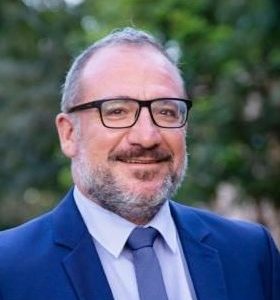
Bruno POZZI
Europe Director, UNEP

Katrin SCHNEEBERGER
Director, Swiss Federal Office for the Environment

Dominique BURGEON
Director, Geneva Office, FAO
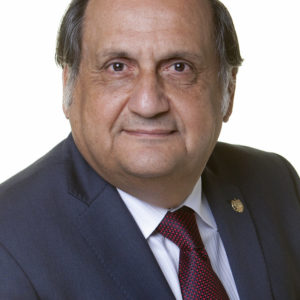
H.E. Amb. Joaquín Alexander MAZA MARTELLI
Permanent Representative of the Republic of El Salvador to the United Nations Office and other international organizations in Geneva
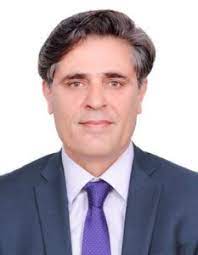
H.E. Amb. Khalil HASHMI
Permanent Representative of Pakistan to the United Nations Office and other international organizations in Geneva
Discussion

Radhika MURTI
Director, Global Ecosystem Management Programme, IUCN

Musonda MUMBA
Director, Rome Centre for Sustainable Development, UNDP

Pasang Dolma SHERPA
Executive Director, Center for Indigenous Peoples Research and Development | Former Co-chair of the Local Communities and Indigenous Peoples' Platform (LCIPP) of the UNFCCC
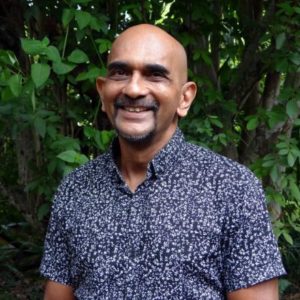
Nirmal SHAH
Chief Executive Officer, Nature Seychelles
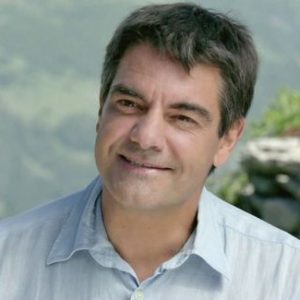
Gilles MULHAUSER
Director General of the Water Offi ce, Geneva Canton
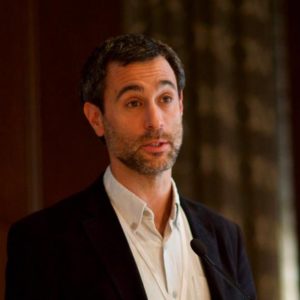
Marcos VALDERRÁBANO (moderator)
Programme Manager Red List of Ecosystems, IUCN
Summary
Welcome and Introduction: Celebrating World Environment Day and Launching the UN Decade on Restoration
World Environment Day: Driving Five Decades of Environmental Action | Bruno POZZI, Europe Director, UNEP
Although we cannot meet in person at the Environment House as we usually do, we cannot miss this opportunity to celebrate the environment, which is at the centre of political and action nowadays. On top of World Environment Day, we are also launching the UN Decade on Ecosystem Restoration, where we unite as a movement of friends of nature. It is time to make peace with nature and bring solutions that are based in nature to address the triple planetary crisis: biodiversity loss, climate change, and pollution.
Through the UN Decade on Ecosystem Restoration and the acceleration of the SDGs, which we must achieve by 2030, we are calling for more action on nature for people. NbS on the largest scale will make a difference and are part of the solution to the triple planetary crisis. This movement brings together civil society, governments, and the private sector to invest in healthy and strong ecosystems.
Generation Restoration: Switzerland Supporting Action at All Levels | Katrin SCHNEEBERGER, Director, Swiss Federal Office for the Environment
Environmental policy today is deeply interconnected. Many of the national action plans are rooted in international strategies. While the COVID-19 pandemic still limits physical meetings, Switzerland is glad to take part in this virtual exchange on World Environment Day.
We are all aware that ecosystem restoration is of utmost importance. Our livelihoods depend on healthy food, clean water and unspoiled soils. If we want to protect our lives, we must protect nature, with its different ecosystems, habitats and species. The One Health approach also reminds us that human health has always been at the centre of environmental policy.
The declaration of a UN Decade on Ecosystem Restoration means that ecosystems are suffering. Humanity didn’t care enough about sound ecosystems. Overexploitation, pollution, uncontrolled expansion of settlement, traffic infrastructure and intensive agricultural production affect many areas, in Switzerland and around the world.
Luckily, Switzerland does not yet suffer from drought and desertification, and has fully protected its forest. But we have polluted water and corrected waterbeds. Now the Federal Office for the Environment (FOEN) is leading project to restore these degraded sites. Additionally, international trade and the imported products consumed in Switzerland leave a non-neglectable ecological footprint abroad.
Now, we must restore and repair these degraded land- and seascape. International Geneva is a hub of knowledge in that area, hosting the world competence centres for environment, health, trade, development and labour. We must ensure that this knowledge is shared and that we all amplify the message that sustainable development is possible.
Switzerland is glad to host so many centres of excellence in Geneva. Alongside with Nairobi, Geneva is the global centre for international environmental policy, with a network that brings together so much expertise, commitment and engagement. Switzerland expresses its gratitude to UNEP for its excellent work, as well as all the individuals who make international geneva to what it is.
UN Decade on Restoration: Time to Rebuild What Has Been Lost | Dominique BURGEON, Director, Geneva Office, FAO
FAO and UNEP have a long story of partnership and will be joining forces to ensure that the vision of the UN Decade on Ecosystem Restoration is fully realized. Ecosystems are at the centre of life. They provide us with many benefits, including climate stabilization, better air quality, supply of water and food, and protection from disasters and diseases.
Yet, ecosystems face massive threats. Forests are being cleared; rivers and lakes are polluted; wetlands and peatlands are drained; coasts and oceans are degraded and overfished. Conservation of healthy ecosystems is essential but not enough. We need to go beyond and restore all ecosystems that can be restored.
At the global launch of the decade on 4 June, FAO Director-General Dr. Qu Dongyu called for a change of mindset, as increasing pressure on the world’s natural resources is affected the wellbeing of 40% of global population. He also emphasized that we need more efficient, inclusive, resilient and sustainable agri-food systems in order to restore ecosystems and safeguard sustainable food production.
The UN Decade on Ecosystem Restoration is an opportunity to reset our relationship with nature. Knowledge exists and promising initiatives are undertaken in many different contexts. However, action is needed at scale, for instance to deliver on the existing commitment to restore 1 billion hectares of degraded land.
Rebuilding ecosystems requires action from everyone: individuals, communities, investors, politicians, and regional and international organizations. Together, FAO & UNEP will make sure to provide the best of their expertise, as well as a platform to exchange experiences and cross-fertilize.
UN Decade on Restoration: Elevating Action on Ecosystem Restoration | H.E. Amb. Joaquín Alexander MAZA MARTELLI, Permanent Representative of the Republic of El Salvador to the United Nations Office and other international organizations in Geneva
The UN Decade on Ecosystem Restoration is one of the most important initiatives led by El Salvador in the framework of the UN General Assembly. This decade is the opportunity to strengthen action for nature and people, by employing NbS at the largest scale to safeguard food security and clean water, as well as halt biodiversity loss and the impacts of climate change.
El Salvador has a deep commitment to ecosystem restoration in order to recover ecological functionality and the provision of ecosystem services to people. Therefore, El Salvador presented the initiative to declare the UN Decade on Ecosystem Restoration for 2021-2030 at the high-level meeting of the Bonn Challenge in Brazil in March 2018. In 2019, the UN General Assembly adopted the resolution 73/284 on the matter.
As we launch the decade in Geneva, we are certain that all the relevant stakeholders will be able to amplify to call for the protection and revival of ecosystems all around the world. Provide important inputs as Member States prepare their national strategy to implement NbS and restoring ecosystems. Let us contribute to this momentum by highlighting the importance of ecosystem restoration and its crucial impact on sustainable development.
World Environment Day 2021: Inspiring Action to Revive our Damaged Ecosystems | H.E. Amb. Khalil HASHMI, Permanent Representative of Pakistan to the United Nations Office and other international organizations in Geneva
World Environment Day is the opportunity to raise our ambition and redouble our efforts in preventing, halting and reversing environmental and ecosystem degradation. Pakistan is the proud global host of this year’s celebrations.
As we also launch the UN Decade on Ecosystem Restoration, let us remember that we dispose of extensive scientific evidence about the drivers of ecosystem degradation, their devastating impacts and the myriad of benefits of restoration. We need to raise awareness not only about the urgency of the matter, but also the range of solutions that are available to conserve and restore ecosystems, and thereby contribute to the achievements of the SDGs.
However, even as progress is being made, there is much more to be done across regions, governments, international organisations, businesses, civil society, media, and local communities to save our planet and recreate ecosystems in which everybody benefits from better air, food, water and biodiversity.
Pakistan is leading by example, in taking ambitious action despite its limited economic resources. Pakistan contributed 50 billion USD to the independent fund of the Ecosystem Restoration Initiative, launched three years ago. The country has planted 1 billion trees and is planning to plant an additional 9 billion in the next 3-4 years. A nation-wide project to restore 19 wetlands and regenerate aquifers is under development. Pakistan has also set the target of converting 60% of its energy needs to renewables and to replace 30% of road vehicles to electric vehicles by 2030. A ranking of cities based on green footprint was introduced, called the Clean Green Pakistan Index. Furthermore, Pakistan established 15 new national parks and is planning to conserve an additional 7300 km2 of land and mangrove through the Protected Areas Initiative.
Even as it is proud of its achievement, Pakistan is mindful of the additional work that is needed. No single country can achieve the ambitious targets on its work. Therefore, enhancing international cooperation is essential to meet the climate and environmental goals. For this, scaling up climate finance, technology sharing partnerships and capacity building is crucial.
Nature-based Solution and Ecosystems Restoration: Current Development & Opportunities
Setting the Stage | Marcos VALDERRÁBANO, Programme Manager Red List of Ecosystems, IUCN
As many UN Members are also IUCN State Members and our families get closer, it is important that we align our way of thinking and imagining the future. IUCN is heavily involved on the one hand in Nature-based Solutions, with the creation of the standard and the provision of the scientific background, and on the other hand as a global partner to the UN Decade on Ecosystem Restoration, mobilizing its community around this initiative.
As we start unfolding the question of how to make it possible, the first thing that arose is that ecosystem restoration has enormously evolved since the 1980s. At the start, restoration was focused on the rehabilitation of specific degraded sites. Today, the level of ambition with the decade is radically different. We are aiming for a global change, that goes across sectors and addresses entire ecosystems. Restoration is about developing a similar scale response to the global degradation. Some of the tools that IUCN has been developing over the past years, such as the ICUN Red List of Ecosystems, can inform some of those decisions and how we can make this happen at a large scale.
If we are to be courageous to imagine, we also need to be courageous to implement. We need to imagine a sustainable future, and then move into how to make it happen.
Aligning Nature-based Solutions Criteria with Restoration Principles | Radhika MURTI, Director, Global Ecosystem Management Programme, IUCN
As we talk about scaling up ecosystem restoration, we cannot stand the risk of missing out on purposefully designed restoration that can benefit both people and nature, by keeping restoration within the conservation community only. We cannot choose between people and nature: we need to use restoration as a pathway for both.
The definition of NbS, adopted by IUCN in 2016, highlights three ways to do NbS: protect, sustainably manage and restore ecosystems to obtain societal and biodiversity benefits. Thus, restoration is one of the key pillars of the success of NbS. Many societal challenges – climate change mitigation and adaptation, disaster risk reduction, economic and social development, human health, food security, water scarcity, environment degradation and biodiversity loss – have the possibility to benefit from NbS.
In 2020, IUCN launched the Global Standard for NbS, a blueprint that can help everyone stay accountable to one framework when doing NbS. The standard is essential to ensure the consequences of NbS projects and initiatives are taken into account so that they truly benefit people. It helps us design restoration so that it is not only about bringing back vegetation cover or reducing soil degradation, but that is provides tangible immediate and future benefits to people.
The Science Task Force is convened by IUCN as a pillar of the UN Decade on Ecosystem Restoration to deliver a foundational think-piece on ecosystem restoration as well as to support the strong science throughout the Decade. The task force will collate different sources of knowledge, including from indigenous people.
In order to connect the dots between leaderships, we need to ensure there is consistency. While we did not have a proper definition of ecosystems for years, IUCN launched a classification of ecosystems in March 2021. This typology sets the base map for all ecosystems around the world and allows to systematically measure whether we are reducing the risk of ecosystems collapse. There are other tools we can build on, such as the Bonn Challenge Barometer.
We do not have to create everything from scratch. Rather we should think how to tap into the many people and networks who are already working on initiatives, such as 17’000 volunteer experts working with IUCN, or other actors such as the Global Mangrove Alliance. Similarly, we need to leverage existing and new initiatives, such as the Bonn Challenge.
Any new tool we create needs to be aligned with existing tools. Principles of ecosystem restoration need to be aligned in order to really leverage the benefits of restoration to NbS and the value of Nbs to inform restoration. Nine principles for ecosystem restoration are in the making by the science task force and will be launched in September at the IUCN Congress.
The UN Decade on Ecosystem Restoration can be one of the most influencial tools in realizing our NbS ambitions. This goes both ways: NbS has so much to benefits from restoration, and restoration can get so much direction by NbS to make sure there is a win-win for people and nature.
Fostering Development and Achieving the SDGs through Nature-based Solutions for Restoration | Musonda MUMBA, Director, Rome Centre for Sustainable Development, UNDP
In 2011, I was fortunate to lead a programme with UNEP, UNDP and IUCN focused on ecosystem-based adaptation in mountain regions. This experience working in the mountain ranges of Peru, Uganda and Nepal taught me the importance of intersectionality and system-thinking when employing NbS. This experience also highlighted the crucial role of women, youth and indigenous people in managing these ecosystems. Considerable progress has been made in that area. For instance, the UN Food System Summit is discussing agroecology, which involves practices that indigenous people have been doing for centuries to keep their ecosystems intact.
The Rome Centre for Sustainable Development is now working on supporting the G20 Presidency of Italy, together with COP26 co-Presidency. We now see a massive shift, as NbS moved at the centre of G20 discussions. Already from the previous Presidency of Saudi Arabia, discussions have moved forward, addressing why NbS are important and how they connect the three Rio Conventions on biodiversity, land and climate.
We need to remember the centrality of people and planet, which will serve as a theme for the G20 to move forward. The essential question remains: how do we achieve prosperity in a sustainable manner? In the resolution for the UN Decade on Ecosystem Restoration, the word before “restore” is “conserve”. We need to ensure that we conserve what we have because even with restoration we are now sure whether species will come back in a 1.5°C world. We are already seeing the impacts of climate change. Thus, we need to rethink how we do restoration in a more holistic and systemic way.
Balancing Science & Indigenous Knowledge for Successful Ecosystem Restoration | Pasang Dolma SHERPA, Executive Director, Center for Indigenous Peoples Research and Development
Many studies at the global and national level from IPCC, IPBES, IUCN, ILO, the World Bank, and more have highlighted the interconnectedness of indigenous people and nature. In its 2019 report, the IPCC pointed out the indigenous people’s traditional livelihoods and agricultural practices can enhance climate change resilience. While indigenous people occupy only represent 6% of global population, they contribute to the enhancement of 80% of the world’s biodiversity. These studies show the important role that indigenous people play for NbS.
In our local experience on the ground, we clearly see that indigenous people have a symbiotic relationship with nature and cannot be separated from nature. However, this interconnected was often not understood in conservation practices. Consequently, indigenous people have often been separated from their land in the name of conservation. In many places where national parks are established, indigenous communities are struggling to continue their livelihoods and governance systems.
Indigenous people are continuously represented as illegal settlers in their own ancestral land despite the fact that that they contribute to NbS, restoration of ecosystems and climate resilience. The good news is that the importance of indigenous people’s concerns and issues to the definition of NbS is increasingly recognized. At COP21 in 2015, the UNFCCC established the local communities and indigenous people’s platform (LCIPP), recognizing how indigenous knowledge can be balanced with scientific knowledge and how indigenous people’s practices contribute to climate change resilience. The IUCN Global Standard for NbS also includes indigenous people. Discussions at the CBD is also increasingly dealing with how we can protect nature without separating indigenous people from nature in the name of conservation, and we need to ensure the rights of indigenous people are upheld.
Including indigenous people’s concerns in all these for a is essential to secure their contribution to NbS for the current and future generations. When mainstreaming NbS in national policies, many studies are trying to bring more indigenous knowledge into their work. However, these often rely on secondary data, which does not fully reflect the experience and struggles of indigenous people. The absence of disaggregated data also remains a challenge, and often hides the contribution of indigenous people’s customary governance systems, knowledge, and values to sustain natural resources and ecosystems.
Implementation also remains a challenge, as governmental bodies are not necessarily aware of the role and contribution of indigenous people, women, and local communities. Therefore, we need a paradigm shift from business-as-usual to a rights-based conservation model.
Nature-based Solutions in Action: Supporting Livelihoods and Resilience in Coastal Communities | Nirmal SHAH, Chief Executive Officer, Nature Seychelles
To illustrate the importance of NbS and ecosystem restoration, Nirmal Shah presented two projects from Seychelles: the first one of coral reef restoration and the second on a locally managed marine area.
Nature Seychelles has led many successful projects for forest and wetland restoration for the purpose of saving critically endangered birds on some islands, in partnership with hotels and tourism services. After 15 years of work on land, Nature Seychelles moved to the marine areas, where coral bleaching is massive due to climate change. Coral reefs are essential for tropical islands and coasts. Therefore, the project aimed at using large-scale coral reef restoration to enhance natural recovery, biodiversity, and ecosystem services. Over the last 10 years, the project leveraged 1.3 million USD and restored 5400 m2 of degraded reef, increasing fish population by 300%. This project is now part of a larger regional project funded by the Adaptation Fund. In the upcoming years, it will harness new science to improve reef restoration, farm more resilient coral colonies, foster research, train local people, and support coastal protection projects.
For the second project coordinated by IUCN, Nature Seychelles is facilitating the set-up of the first locally managed marine area in Seychelles (LEAP). The project brings expertise in conservation, ecotourism, marine restoration, and more into the community, and helps them conserve and restore their ecosystems, which developing awareness and livelihoods. The project also fosters policy change to allow local people to manage the areas that are important to them.
Lessons Learnt from 20 Years of Water Ecosystems Restoration in Geneva | Gilles MULHAUSER, Director General of the Water Office, Geneva Canton
The Canton of Geneva has almost 25 years of experience in restoring rivers in the region. Gilles Mulhauser shared four lessons learnt with the audience.
First, the inclusion of ecosystem restoration on the highest legal reference and the strong political will to get resources are key factors to get the necessary financial and human resources and skills to make restoration successful. In Geneva, the opportunity was created in 1997 when two engaged politicians managed to include restoration in the cantonal water law (Art 43) and established a fund to finance restoration through hydroelectrical and pumping taxes.
Secondly, success was pushed by the width of goals pursued, not only on ecological and economical scale, but also on social scale. While the legal text requires the functions of the rivers to be restored, the people working on the topic interpreted it in its wider significance, so that it included water risk management, biodiversity recovery, and social benefits for the population. Trails, information points, fishing and bathing spots were created and helped the projects to be adopted by the people.
Thirdly, civil society plays a crucial role and partnership should be developed with associations, citizen groups and other actors. Listening to and involving them to bring ideas into the reality of the projects are key factors to obtain the possibility to build something in the territory. NbS are not so evident to understand, especially for urban populations or farmers; but using charters as special tools to involve local people proved useful.
Fourth and finally, Geneva had to find solutions considering the integrated management of the water resources in a transboundary dimension. Geneva is systematically the lowest point for all the rivers in the basin, and French communities have to be involved so that quality and quantity of water can be improved and guaranteed downstream. Therefore, we have created numerous tools to collaborate with French communities, which will be described in a publication to be released this summer. These tools enabled us to restore 40 km of river banks (around 10% of all rivers in Geneva), and to raise awareness and foster discussions on the role of water in our lives.
Q&A
Q: How can we ensure that indigenous and local communities are front and centre restoration strategies and plans, global to local? How could we promote the recognition of the contribution of indigenous communities to the conservation of ecosystems and face climate change, at a political level?
Pasang Dolma Sherpa: One of the most important elements is awareness and capacity building, in particular for understanding the role and contribution of indigenous people. Different international and regional human rights treaties are also protecting indigenous people’s governance systems, knowledge and cultural practices. Enhancing indigenous knowledge and raising awareness is thus essential to their meaningful participation. Most importantly, governments and decision-makers need to understand why the voice of indigenous people is important. Finally, we need to invest in supporting indigenous people and in promoting their knowledge systems
Musonda Mumba: Additionally, we have to recognize the challenges of environmental defenders and the necessity of having policies at the national level which protect the 5% of the population that takes care of 80% of the biodiversity. Engaging with these communities is crucial to ensure there is a safe political space for them.
Radhika Murti: We need to move beyond representation. NbS involves practices that indigenous people have been doing for centuries. Therefore, it is impossible to successfully implement an NbS in a landscape where indigenous people are involved without tapping into their knowledge. We need to ensure they are better represented in the global policy arena. In 2016, the IUCN governance framework made an important step in that direction by include indigenous people groups.
Q: How can we ensure a socio-economic development for a marine area while preserving ecosystem services?
Gilles Mulhauser: In Switzerland, balancing the financial aspect of the contributions to water restoration projects is a challenge. But by taxing hydroelectric and drinkable water, and using these funds for biodiversity and social goals, it is possible to move forward with the three pillars of sustainable development.
Nirmal Shah: We need to better understand the value of the ecosystems. People in the Seychelles now understand that conserving the environment leads directly to economic development, mostly through tourism. People also understand the value of intact and restored ecosystems (forests, mangroves and coral reefs ) to their wellbeing and lifestyles.
Conclusion
“Restoration will not realize its full potential unless the conservation community engages with the development sector. We need to go beyond our technical communities and be open to work in partnerships across sectors” – Radhika Murti
“We have a duty to leave intact and sustainable ecosystems behind us. We need to make future generations proud of us.” – Musonda Mumba
“Separating indigenous people and nature in the name of conservation threatens both indigenous people and nature. Thus, legal recognition of customary governance systems is essential and should be a basis or NbS” – Pasang Dolma Sherpa
“The existing projects prove that NbS work and can provide development opportunities” – Nirmal Shah
“We need to empower best practices in NbS and invest in young people” – Gilles Mulhauser
Video
In addition to the live WebEx and Facebook transmissions, the video is available on this webpage.
Video messages from NbS Champions
Documents
Links
The update on Nature-based Solutions provides relevant information and the most recent resources, news and articles from the various organizations in international Geneva and other institutions around the world.
- UN Decade on Ecosystem Restoration | Global Website
- World Environment Day | Global Website
- Decade on Ecosystem Restoration | IUCN
- World Environment Day | Geneva Environment Network
- Ecosystem Restoration Playbook – A practical guide to healing the planet | UNEP
- The Business Case for Conservation – reflections at the time of COVID-19, by Dr. Nirmal Jivan Shah | IUCN | 29 April 2021
- Pasang Dolma Sherpa, Indigenous Peoples Representative to the U.N., Speaks With GlacierHub | IUCN | 22 July 2020
- Women Achiever – Pasang Dolma Sherpa (PhD) | Mogul Media | 10 February 2020

